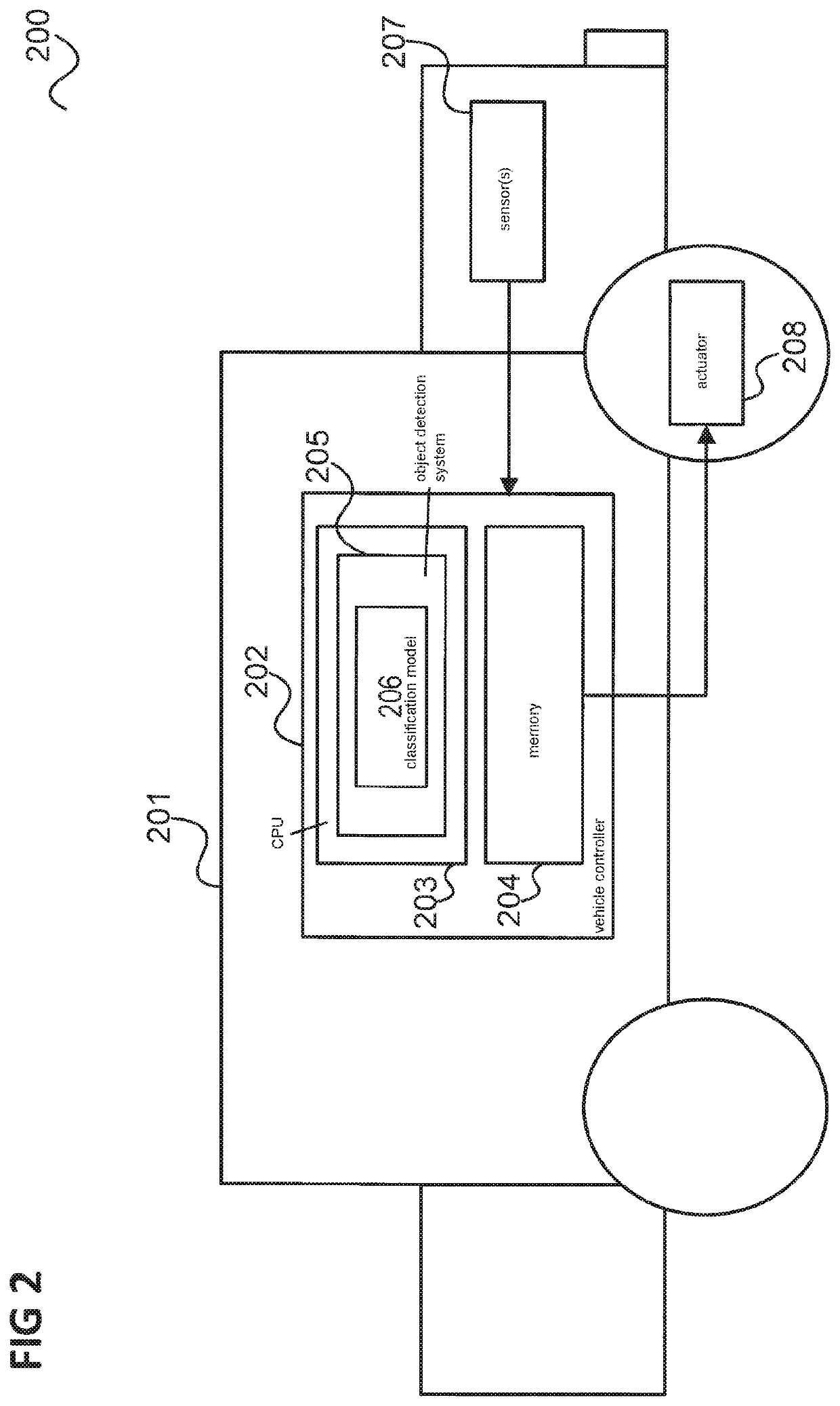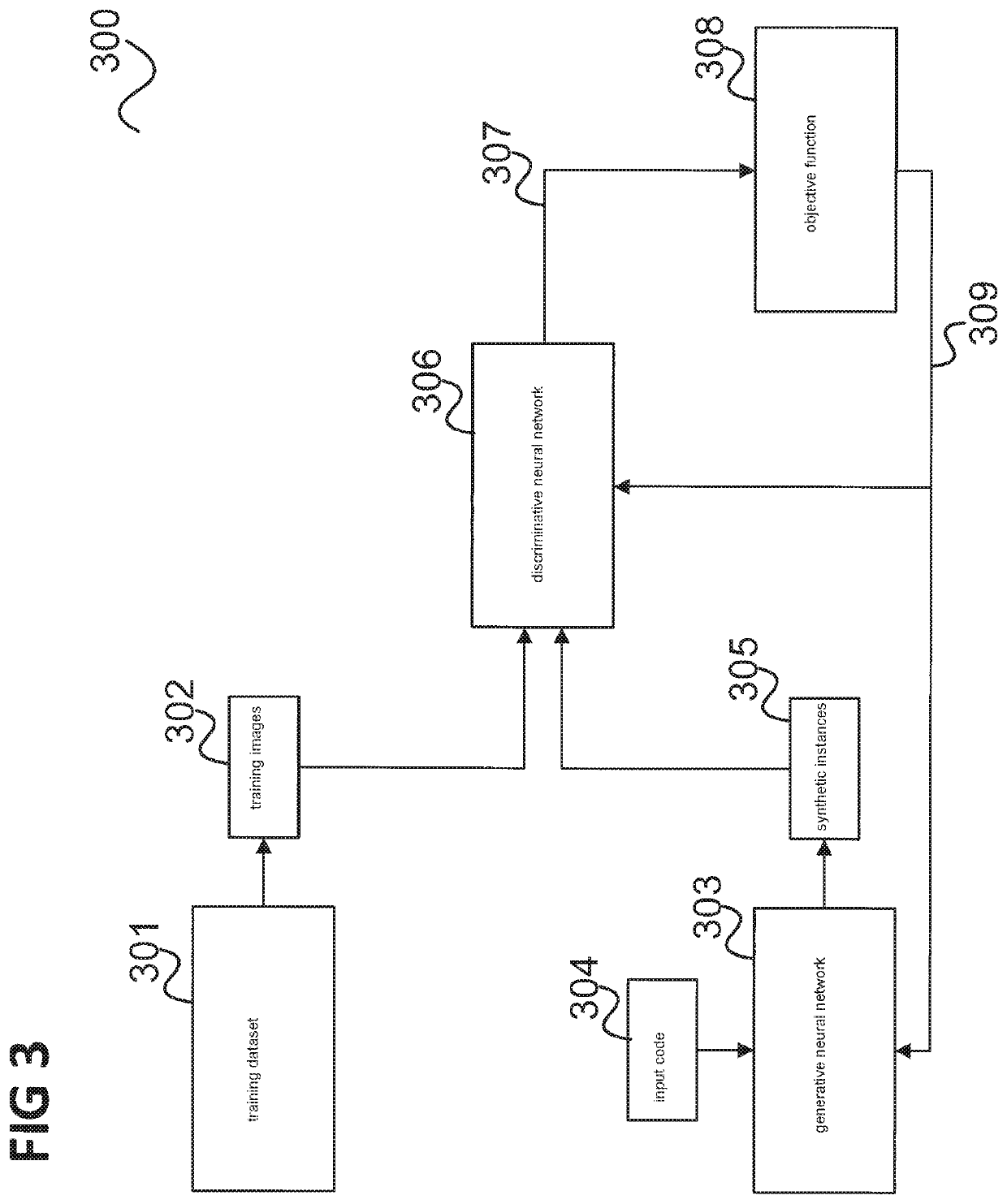Device and method for the generation of synthetic data in generative networks
a technology of generative networks and synthetic data, applied in the field of devices and methods for the generation of synthetic data in generative networks, can solve the problems difficult and more complex training compared to standard classification models, and difficulty in detecting the presence of vanishing generator gradients, so as to achieve reliable vehicle control, robust input sensor data classification, and reliable control of the actuator
- Summary
- Abstract
- Description
- Claims
- Application Information
AI Technical Summary
Benefits of technology
Problems solved by technology
Method used
Image
Examples
Embodiment Construction
[0052]The following detailed description refers to the figures that show, by way of illustration, specific details and aspects of this disclosure in which the present invention may be practiced. Other aspects may be utilized and structural, logical, and electrical changes may be made without departing from the scope of the invention. The various aspects of this disclosure are not necessarily mutually exclusive, as some aspects of this disclosure can be combined with one or more other aspects of this disclosure to form new aspects.
[0053]In the following, various examples will be described in more detail.
[0054]FIG. 1 shows an inspection system 100 illustrating an example for the detection of defective parts.
[0055]In the example of FIG. 1, parts 101 are positioned on an assembly line 102.
[0056]A controller 103 includes data processing components, e.g. a processor (e.g., a CPU (central processing unit)) 104 and a memory 105 for storing control software according to which the controller ...
PUM
 Login to View More
Login to View More Abstract
Description
Claims
Application Information
 Login to View More
Login to View More - R&D
- Intellectual Property
- Life Sciences
- Materials
- Tech Scout
- Unparalleled Data Quality
- Higher Quality Content
- 60% Fewer Hallucinations
Browse by: Latest US Patents, China's latest patents, Technical Efficacy Thesaurus, Application Domain, Technology Topic, Popular Technical Reports.
© 2025 PatSnap. All rights reserved.Legal|Privacy policy|Modern Slavery Act Transparency Statement|Sitemap|About US| Contact US: help@patsnap.com



